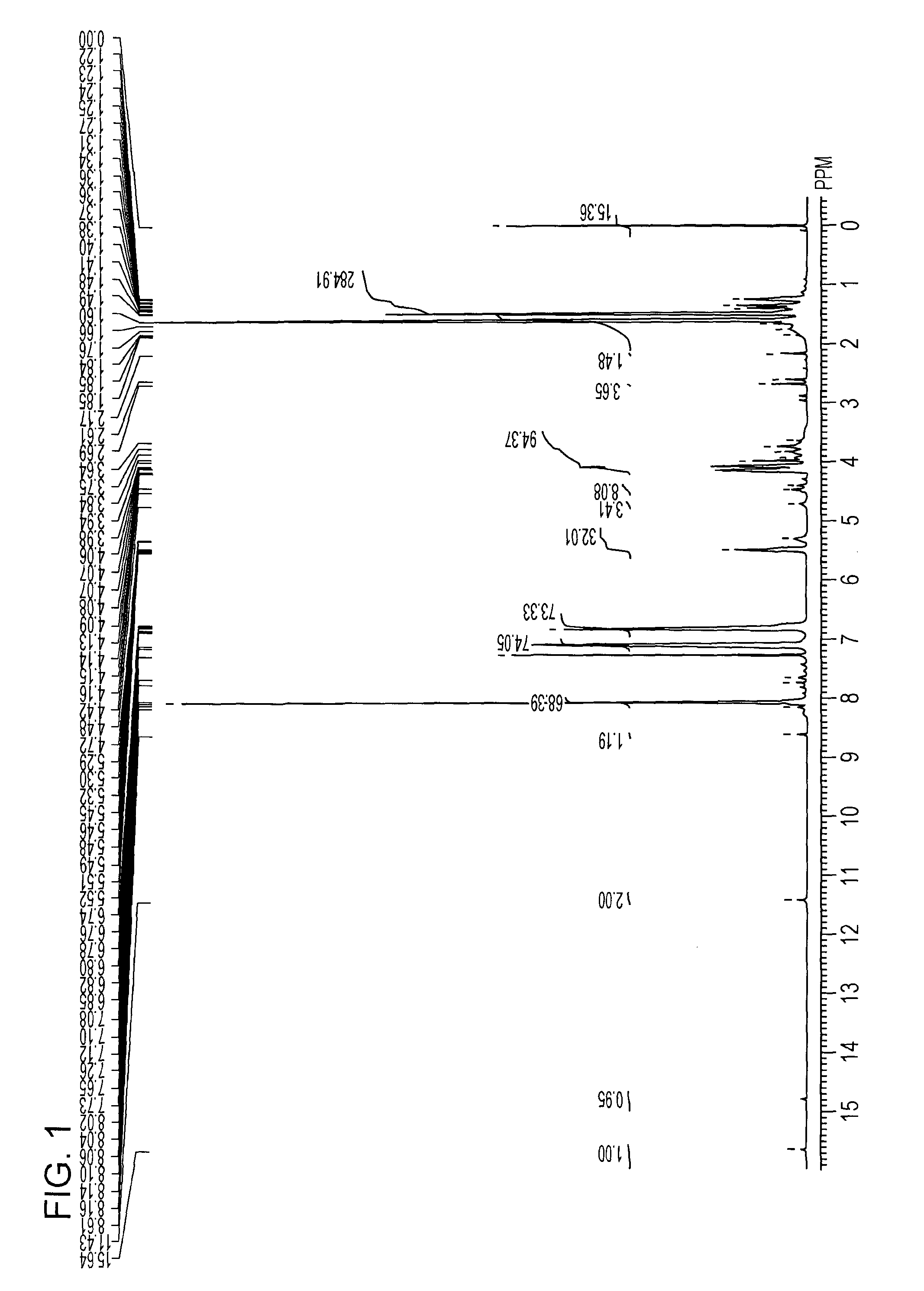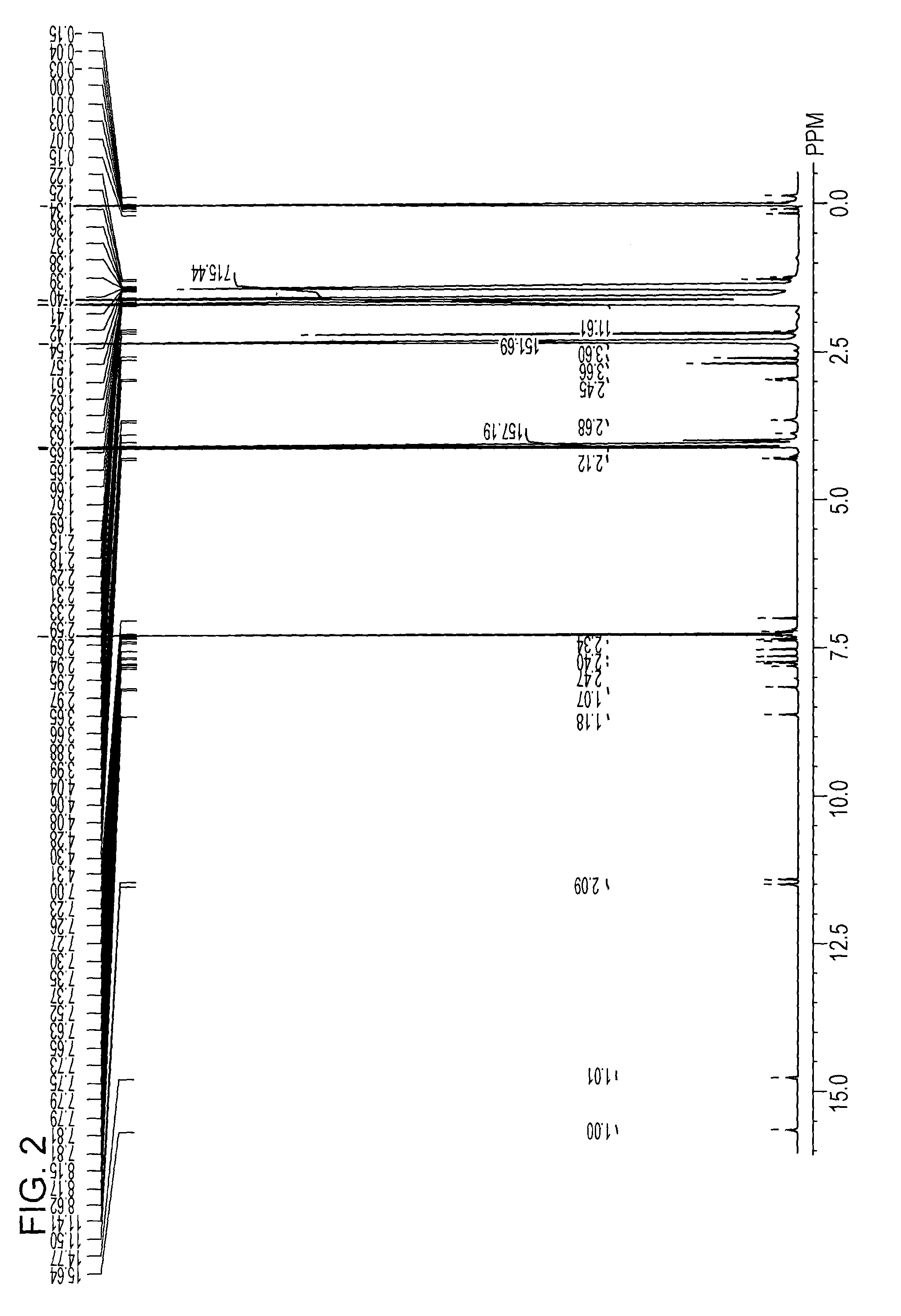Toner and method for manufacturing toner particles
a technology of toner particles and toner, which is applied in the field of toner, can solve the problems of increasing the viscosity of the pigment dispersion in the pigment dispersion process, and unable to achieve the color tone of toner required for high-resolution images, and achieve the effect of satisfying the color ton
- Summary
- Abstract
- Description
- Claims
- Application Information
AI Technical Summary
Benefits of technology
Problems solved by technology
Method used
Image
Examples
synthesis example 2
of Polyester Resin
[0190]200 parts of 12-hydroxystearic acid, 8.24 parts of stearic acid for blocking a terminal hydroxy group, and 56.8 parts of xylene in a four-neck flask were melted at 140° C. 0.485 parts of a catalyst titanium tetraisopropoxide was added to the resulting liquid mixture, and the liquid mixture was heated to 180° C. The liquid mixture was stirred at 180° C. for 42 hours while a by-product water was removed. After the completion of the reaction, xylene was distilled off, and the product was dried under reduced pressure to yield a resin (B). The physical properties of the resin (B) were measured with the apparatuses described above. The analysis results were as follows: Analysis Results for Resin (B)
[1] Molecular Weight Measurement (GPC):
[0191]Weight-average molecular weight (Mw)=5069
[0192]Number-average molecular weight (Mn)=2636
[2] Acid Value Measurement:
[0193]31.9 mgKOH / g
[3]1H NMR (400 MHz, CDCl3, at room temperature): δ [ppm]=4.99 (1H, m), 2.19 (2H, t), 2.10 (0....
synthesis example 1
of Azo Dye Intermediate (74)
[0201]An azo dye intermediate (74) having the following structure was prepared in accordance with the following scheme.
[0202]
[0203]3.11 parts of p-nitroaniline (68) was added to 30 parts of chloroform. The resulting mixture was cooled in ice to 10° C. or less. 1.89 parts of diketene (69) was added to the mixture. The mixture was stirred at 65° C. for two hours. After the completion of the reaction, a chloroform extract was concentrated to yield 4.80 parts of a compound (70) (yield: 96.0%).
[0204]40.0 parts of methanol and 5.29 parts of concentrated hydrochloric acid were added to 4.25 parts of dimethyl 2-aminoterephthalate (71). The resulting mixture was cooled in ice to 10° C. or less. 2.10 parts of sodium nitrite dissolved in 6.00 parts of water was added to the mixture. The mixture was allowed to react at that temperature for one hour. 0.990 parts of sulfamic acid was added to the mixture. The mixture was stirred for 20 minutes to yield a diazonium salt...
preparation example 3
of Pigment Dispersion
[0238]Pigment dispersions (ah) and (ai) were prepared in the same manner as Preparation Example 1 of Pigment Dispersion except that the pigment having the formula (8) was replaced with the pigments having the following formulae (85) and (86), respectively.
[0239]
[0240]Reference pigment dispersions and comparative pigment dispersions were prepared by the following method. Preparation Example 1 of Reference Pigment Dispersion
[0241]A reference pigment dispersion (aj) was prepared in the same manner as Preparation Example 1 of Pigment Dispersion except that the polyester (35) having a bisazo dye skeleton was not used.
PUM
| Property | Measurement | Unit |
|---|---|---|
| temperature | aaaaa | aaaaa |
| temperature | aaaaa | aaaaa |
| Tg | aaaaa | aaaaa |
Abstract
Description
Claims
Application Information
 Login to View More
Login to View More - R&D
- Intellectual Property
- Life Sciences
- Materials
- Tech Scout
- Unparalleled Data Quality
- Higher Quality Content
- 60% Fewer Hallucinations
Browse by: Latest US Patents, China's latest patents, Technical Efficacy Thesaurus, Application Domain, Technology Topic, Popular Technical Reports.
© 2025 PatSnap. All rights reserved.Legal|Privacy policy|Modern Slavery Act Transparency Statement|Sitemap|About US| Contact US: help@patsnap.com



